The iPhone XS & XS Max Review: Unveiling the Silicon Secrets
by Andrei Frumusanu on October 5, 2018 8:00 AM EST- Posted in
- Mobile
- Apple
- Smartphones
- iPhone XS
- iPhone XS Max
Display Measurement
Apple first introduced OLED panels in the iPhone X last year – and this year’s iPhone XS and XS Max are a continuation of the same designs. The XS’s panel ticks off all the features that are possible to have in a display – OLED, high resolution, wide gamut with colour management, and HDR display with official support of HDR10 and Dolby Vision. The panel is manufactured by Samsung Display, but is said to be a contracted design as blueprinted by Apple.
Among one of the questions I’m still asking myself, is who designed and is providing the display’s DDIC? OLED displays' DDICs are even more important than LCDs', because they not only control colour, but also have to control the active matrix power delivery, and thus the DACs that actually power on the individual pixels.
The iPhone’s display is still a scanning PWM powered panel, meaning the pixels are not actually continuously on, but pretty much work the same way a CRT beam would work – only instead of a single pixel, we have a partial vertical band across the display. The reason for this is just the sheer complexity of running the active-matrix: each subpixel needs to be controlled to 1024 voltage levels to represent the colours of the 10-bit panel. On top of that, the DACs need to have sufficient bit-depth to also provide a seamless range of brightness levels. Here saving on the DAC bit-depth by controlling brightness by PWM is a good workaround the issue.
The iPhone XS’ displays are really excellent at first sight, offering fantastic viewing angles. Personally however, I still have some reservation about the bezel design; Apple has been bested when it comes to screen-to-body ratio by other Android vendors, and I expect to see even more devices come out with what are true full device face screens.
The display’ pixel density doesn’t quite match other 1440p smartphones in terms of sharpness, but it’s still plenty sharp enough for the vast majority of people.
As always, we thank X-Rite and SpecraCal, as measurements are performed with an X-Rite i1Pro 2 spectrophotometer, with the exception of black levels which are measured with an i1Display Pro colorimeter. Data is collected and examined using SpectraCal's CalMAN software.
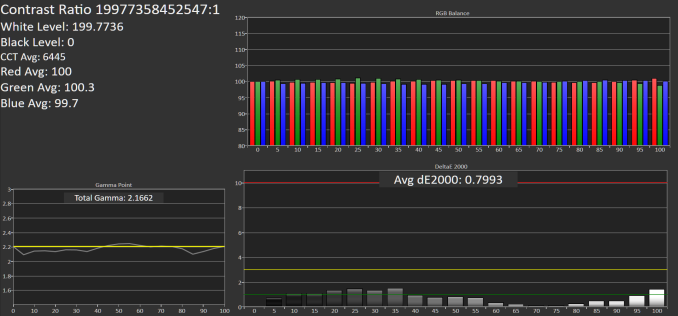
SpectraCal CalMAN
XS :
XSM:
In terms of greyscale accuracy, both the iPhone XS and iPhone XS Max present outstanding accuracy, coming in at an astonishing deltaE2000 of 0.79 for the XS and 1.64 for the XS Max. My Max unit seemed to lack intensity in the green channel, which reduced its accuracy score.
Both phones came in very close to the target 6500K of the D65 illumination point, in practice they’re very much perfect white.
Brightness wise, my XS maxed out at 646cd/m², while my XS Max came in at 668cd/m². There is no auto-brightness boost, however at such high brightness levels, there’s no need. Minimum brightness goes down to a little under 2 nits, allowing for comfortable night-time reading.


iPhone XS - iPhone XS Max
SpectraCal CalMAN
If one were to nit-pick, then it’s about the gamma measurement as the XS seemed to undershoot the 2.2 target, resulting in ever so slightly darker images, while my XS Max overshot it, resulting in brighter images. Still both were very much within imperceptible levels, so it’s not a great concern.
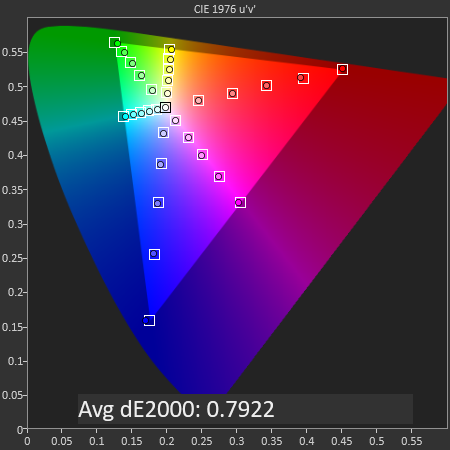
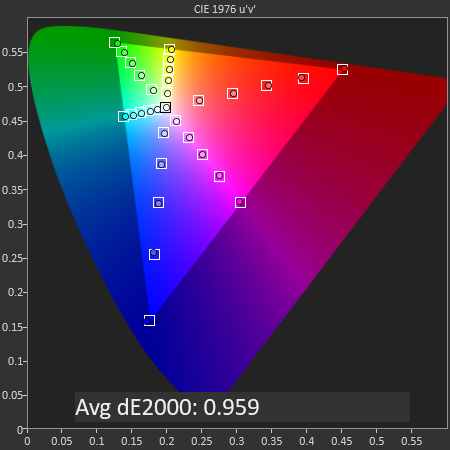
iPhone XS - iPhone XS Max
SpectraCal CalMAN
By default, the XS display and software interpret non-wide gamut tagged content as sRGB. Measuring the saturation accuracy here, we see some amazing results from both phones. The XS posted an amazing dE2000 of 0.79 – this is so low that it’s nigh-impossible to get much better, even when manually calibrating a display. The XS Max fared a bit worse at 0.95, but still below 1 which still deserves it the commendation of being excellently accurate.
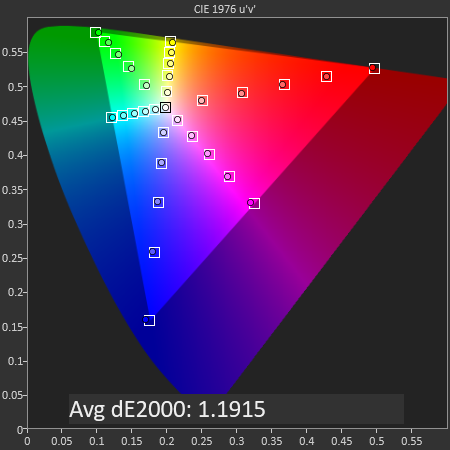
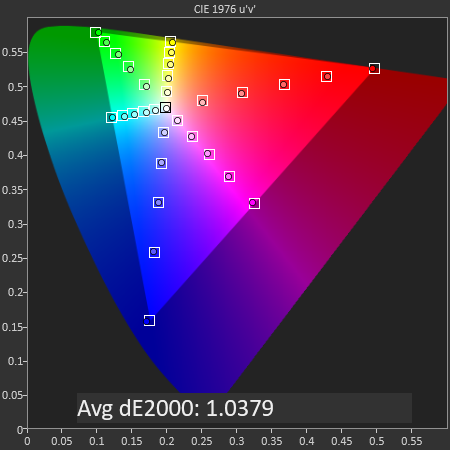
iPhone XS - iPhone XS Max
SpectraCal CalMAN
When the application supports it, and the media has a wide gamut profile embedded, the iPhone XS displays are able to showcase the higher colour intensities of this wider colour gamut. Apple pretty much standardised “Display P3” in the mobile world – a display mode with the gamut of DCI P3, yet with an identical gamma target of 2.2 of sRGB, ensuring seamless interoperability of both gamuts within a display.
Again, both the iPhone XS and the XS Max showcase outstanding calibration with respective dE2000 of 1.19 and 1.03.
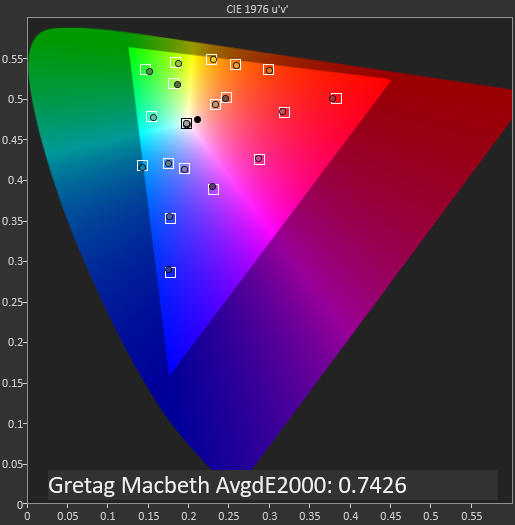
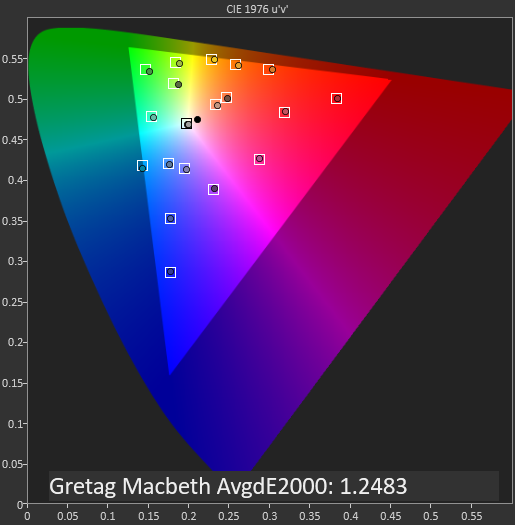
iPhone XS - iPhone XS Max
SpectraCal CalMAN


iPhone XS - iPhone XS Max
SpectraCal CalMAN
The Gretag Macbeth colour targets contain commonly encountered colours, such as skin tones and other colour samples. This test checks not only if the display is able to display the correct colour hue, but also the luminosity.
Again, the iPhones are able to show outstanding figures. The 0.74 score of the iPhone XS is I think the lowest figure we’ve measured on any kind of display, which is amazing. My XS Max figures scored a bit worse, it’s likely that the green channel weakness is part of what’s causing it to be better.
Overall, the iPhone displays are just outstanding. These are the best calibration results we’ve come to measure not only in a smartphone, but likely any display. I have literally nothing negative to say about them, and in terms of picture quality, they are just the best displays on the market.
Display Power
I was curious to see how the new XS fared against last year’s X – as it’s possible there might have been some under-the-hood improvements in terms of panel or emitter materials.
Unfortunately, it looks like the iPhone XS is nigh identical to the iPhone X when it comes to the power characteristics of the panel. My iPhone X had reached just a bit higher brightness and extended up the power curve a bit, but otherwise any differences can just as well be attributed to random manufacturing fluctuations.
| Screen Luminance Power Efficiency 100% APL / White @ 200nits |
||||||
| Device | Screen Luminance Power at 200cd/m² |
Luminance Power (mW) / Screen area (cm²) Efficiency |
||||
| LG G7 | 257 mW | 2.93 | ||||
| LG G6 | 363 mW | 4.43 | ||||
| P20 | 411 mW | 4.86 | ||||
| Galaxy S9 | 563 mW | 6.69 | ||||
| P20 Pro | 601 mW | 6.74 | ||||
| Galaxy S8 | 590 mW | 7.01 | ||||
| iPhone X | ~671 mW | ~8.31 | ||||
| iPhone XS | ~736 mW | ~9.11 | ||||
Comparing the power efficiency at 200cd/m² and normalising the luminance power of the devices for their screen area, we see that the iPhone X and XS fall a tad behind other Samsung OLED panels. I think what this could be attributed to is the 10-bit colour depth of the Apple phones, as their DDIC and the active matrix would need to do more work versus the 8-bit counterparts.
One thing to also very much to take into account is the base power consumption of the phones. The iPhone X, XS and XS Max all fluctuate around 480-500 mW when on a black screen, which is around 150mW more than the iPhone 8 LCD models. This might not sound much, but’s it’s an absolutely huge figure when taking into account that it’s an unavoidable power consumption of the phone whenever the screen is on. I do hope Samsung and Apple alike would be able to focus more on optimising this, as like we’re about to see, it will have an impact on battery life.


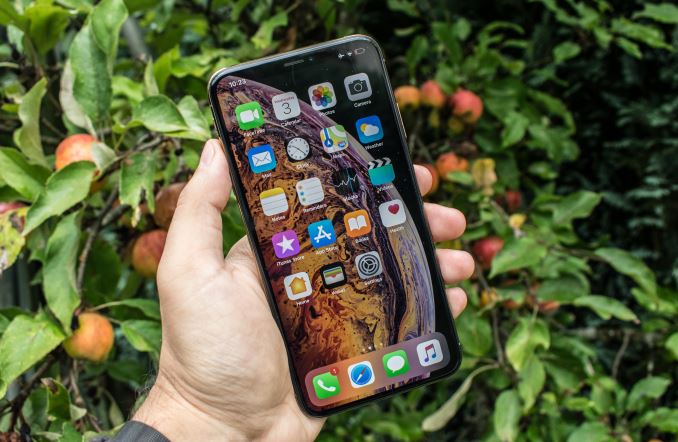
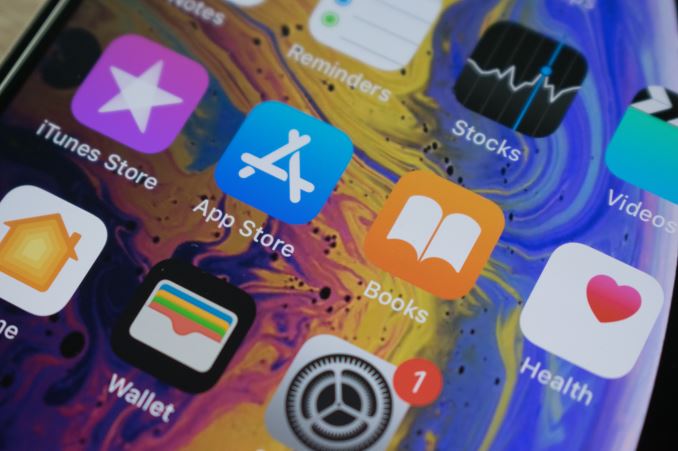
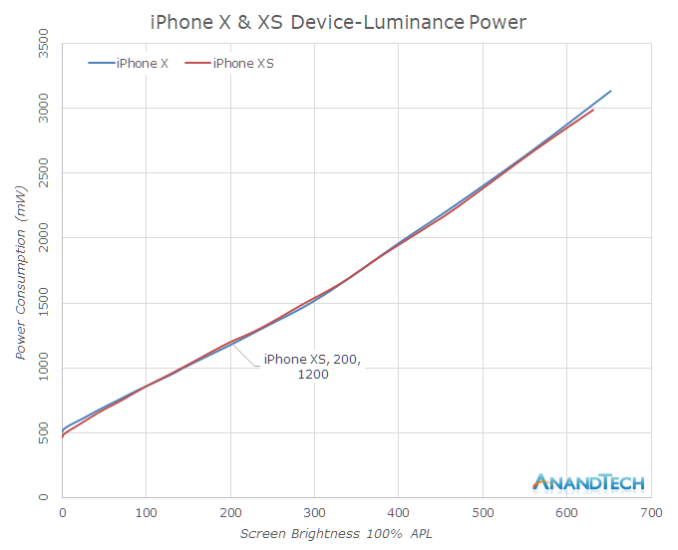








253 Comments
View All Comments
Speedfriend - Monday, October 8, 2018 - link
So you would expect them to use that powerful SOC to deliver real battery improvements, but somehow they can't. No one I speak to complains that their modern smartphone is slow, but everyone complains about battery life.melgross - Saturday, October 6, 2018 - link
It’s both. The deep dive isolates the SoC to a great extent. It can be done with any phone.eastcoast_pete - Friday, October 5, 2018 - link
Andrei, thanks for the review! Yes, these are outstanding phones at outrageous prices. I appreciate the in-depth testing and detailed background, especially on the A12's CPU and GPU. While I don't own an iPhone and don't like iOS, I also believe that, phone-wise, the XS and XS Max are the new kings of the hill. The A12's performance is certainly in PC laptop class, and I wonder if (or how) the recent Apple-Qualcomm spat that kept QC's modem tech out of the new iPhones has helped Intel to keep its status as CPU provider for Apple's laptops, at least for now.One final comment, and one question: Andrei, I agree with you 100% that Apple missed an opportunity when they decided on a rather middling battery capacity for the XS Max. If I buy a big phone, I expect a big battery. Give the XS Max a 5000 mAh or larger battery, and it really is "the Max", at least among iPhones. At that size, a few mm additional thickness are not as important as run time. Maybe Apple kept that upgrade for its mid-cycle refresh next year - look, bigger batteries.
@Andrei. I remember reading somewhere that the iPhone X and 8 used 128 bit wide memory buses. Questions: Is that the case here, and how does the memory system and bus compare to Android phones? And, in your estimate, how much of the A12's speed advantages are due to Apple's memory speeds and bus width ?
dudedud - Friday, October 5, 2018 - link
I was sure that only the A$X were 128bit, but i would also want to know if this had changed.RSAUser - Saturday, October 6, 2018 - link
A12 is definitely not in the laptop class unless you're looking at the extreme low power usage tier.Just because it is quite a but faster than the equivalent on mobile does Not mean it can compete at a different power envelope. If that were true, Intel would already have dominated the SoC market. It requires a completely different CPU design. It's wwhy they can use it for the touchbar on the macbook but not as a main processor.
ws3 - Sunday, October 7, 2018 - link
This review did not compare the A12 with “mobile” Intel chips but rather with server chips. The A12 is on par with Skylake server CPUs on a single threaded basis. Let that sink in.As to why Intel doesn’t dominate the SoC space, Intel’s designs haven’t been energy efficient enougj and also the x86 instruction set offers no advantage on mobile.
tipoo - Thursday, October 18, 2018 - link
It's already competing with laptop and desktop class chips, not just mobile fare. It's up there per core with Skylake server, and NOT normalized per clock, just core vs core.It's like people don't read these articles year over year and are still using lines from when A7 arrived...
tipoo - Thursday, October 18, 2018 - link
Only the A10X and A8X were 128 bit, on mobile that's still power limited for memory bandwidth.juicytuna - Friday, October 5, 2018 - link
Apple's big cores are like magic at this point. 2-3x the performance per watt of the nearest competitors is just ridiculous.sing_electric - Friday, October 5, 2018 - link
I know this is almost a side point, but this really goes to show what a mess Android (Google/Qualcomm) is compared to iOS. At the rate Snapdragon is improving, it'll be 2020/2021 before Qualcomm sells a chip as fast as 2017's A11, and Google is shooting itself in the foot by not having APIs available that take advantage of Snapdragon's (relative) GPU strength.That's on top of other long-term Android issues (like how in 2018, Android phones still can't handle a 1:1 match of finger movement to scrolling, which the iPhone could in 2008). Honestly, if I wasn't so invested in Android at this point, I really consider switching now.